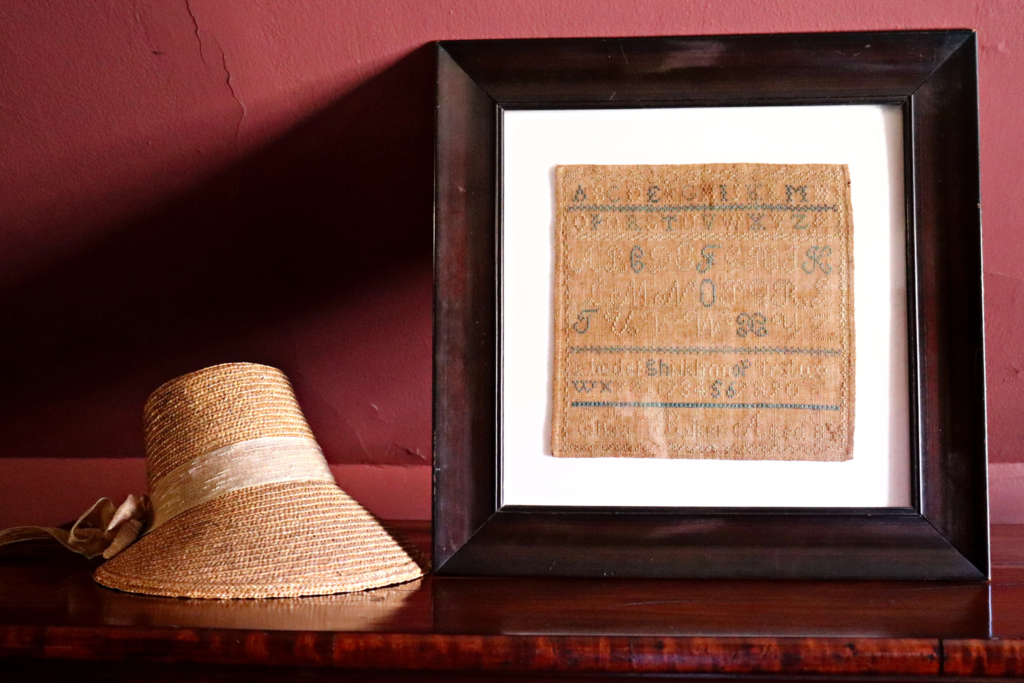
Experience This Exhibition
Visit the Dyckman Farmhouse Museum to see the full DFMA sampler collection on view in the upstairs bedroom.
Advanced tickets recommended.
As early as 1500, middle and upper class girls practiced and showcased their needlework and homemaking skills by making samplers. American samplers stitched on linen or linsey woolsey cloth and embroidered with cotton or silk were displayed in parlors reflecting the girls’ talent and the family’s social status. New York City developed a unique culture surrounding embroidery and samplers. There are six repeating Bible stories seen throughout New York City, including the story of Adam and Eve beside the tree of knowledge with a snake coiled around it. The repeated stories, all important in Reformed Protestant Churches, are an indication of the religious beliefs of families producing samplers, and the teachers instructing the children.
Historically samplers have been outlets for women to record details about themselves and their families. Samplers provide details about culture and women’s lives that might have otherwise been lost. While samplers can be powerful autobiographical tools, they also can also act as a way for women to voice their opinions on politics and issues directly affecting their world. An early example of this is anti-slavery embroidery during the Civil War. In the last few decades women in Latin America have used embroidery to protest violence against women, infanticide, to bring awareness to missing people, and other injustices. During Augusto Pinochet’s rule, Chilean women embroidered the atrocities they faced onto exported burlap sacks.

